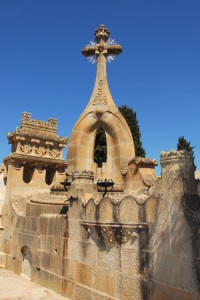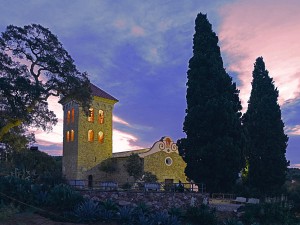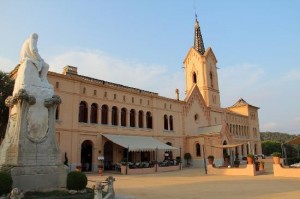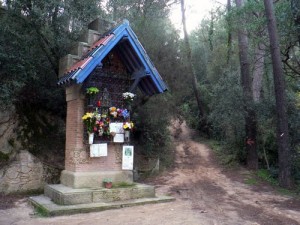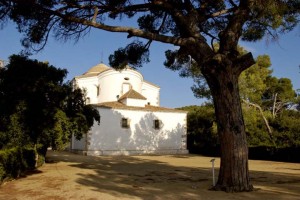NATURAL SPACES IN LLORET DE MAR: LLORET CHAPELS
75% of Lloret de Mar is natural non-developed space. In consequence, if you are interested in mountain, forests, hidden paths, discovering Lloret through a different, widest point of view, we recommend you this route.
You start walking from the main beach road, going south, and turn right in Just Marlés main street direction to petrol station, next to bus station roundabout. If you follow this way just a little more up, you’ll find Lloret de Mar Cemetery. It’s worth to stop for a while to visit the different sights, mixture of neogotic and modernism movement, disciples of master Gaudí leaving their prints on mausoleums and hypogeums in this cemetery.
You leave cemetery through north exit and continue walking about 200 meters by a sand road taking you to the first chapel in your route: Sant Quirze. This is the oldest chapel in town (built before s.XI), but actually without use except for its celebration day, in middle June.
Go back some meters down and turn left in the main road, as if you wanted to leave Lloret. You’ll pass next to Water World, the biggest aquatic park in Europe, and further away, Mas Romeu neighbourhood. After fifteen minutes walking, you’ll see the small bell tower of Les Alegries, known by being the first chapel of Lloret from 1.079 to 1.522.
This chapel has recently been refurbished and it’s worth to visit. At the same time, it celebrates some festive days during the season, so it’s possible that you can enjoy one if you’re lucky.
Leaving Les Alegries, you cross the main road and follow a narrow path through fields. You go next to Water treatment Plant, going up and turning right when you arrive to a wide sand path, taking you to Angel monument and Sant Pere del Bosc. The first one, you’ll find it after a two-hundred meters walking this path.
This monument was built in 1904 to celebrate the festivity of Mother of God of Grace, as a tribute to poet Mossèn Cinto Verdaguer who came to Lloret de Mar some years before. To arrive to Angel sculpture, you need to leave the road and go up a hill called “Turó de Ses Pedres Lluïdores” (hill of bright stones). It’s easy to find, as you can see the monument from the same sand road. Once you have visited it, you return to the path back on the other side of the hill.
From here, you only have to follow this wide, sand road. You’ll find small Mare de Déu de Gràcia chapel (Mother of God of Grace), a small monument built by Puig i Cadafalch in 1898, and the Creu de Terme (Cross of town borders), built by the same architect during the refurbishment of Sant Pere del Bosc, and set up with Montjuïc (Barcelona) stones).
Some meters further, and you’ll see the roofs of Sant Pere del Bosc, showing their heads over the top of the pines.
Sant Pere del Bosc is an old Benedict abbey built in s.X and refurbished at the end of S.XX as a hotel and restaurant, but worth to visit.
From here, you have to choices: Going back from where you came, or following the path turning right, direction to forests leaving Lloret and entering Blanes, arriving to Costa d’en Gallina neighbourhood and going down through these streets to the main Lloret-Blanes road.
If you choose the second option, you’ll cross the roundabout near El Reno Restaurant and Gnomo Park, and after that go up the road to Santa Cristina, the last of Lloret chapels.
Santa Cristina is a white, austere chapel, linked to landscape as a part of pines and oaks forests and the sea salt. Lloret celebrates its festivity each 24 juliol, being one of the two yearly main festivities (Santa Cristina in 24 July and Sant Romà in 19 November).
From here, you’ll go back again through the main road direction to Fenals neighbourhood, and then, direction Lloret beach, where you’ll finish the route.
You need to know that if you choose the firt option (Lloret-Sant Pere del Bosc-Lloret), the route is 12 km long and it takes between two hours and half and three hours to be done; on the other side, if you opt for the second choice (Lloret-Lloret passing through all the chapels in town), the route is 18.5 km long and takes about four hours to be done.

